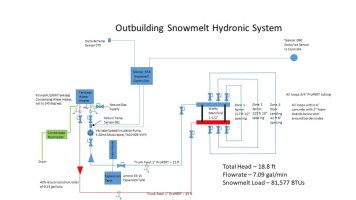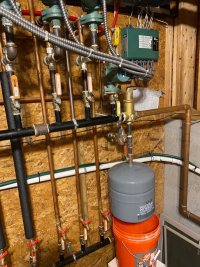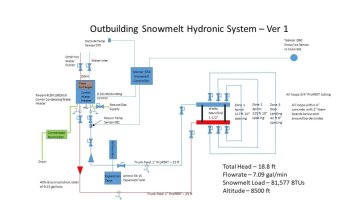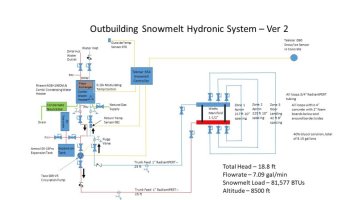Kecarbaugh
New Member
I’m in process of designing a snowmelt system for my outbuilding apron and entry door landing. Given the price of tankless water heaters being cheaper than a boiler, I thought that I could possibly utilize a modulating circulation pump, changing the flow, to externally modulate the tankless water heater since the model that I selected (Rinnai RU199IN) internally modulates based upon inlet and set point temperature and flow rate. I am also proposing that I only have a single primary pump and not a primary/secondary setup as this is a dedicated heater. Is this a reasonable and effective solution? Am I missing some important design considerations?
NOTE: see revised design later in this thread...
NOTE: see revised design later in this thread...
Attachments
Last edited:




